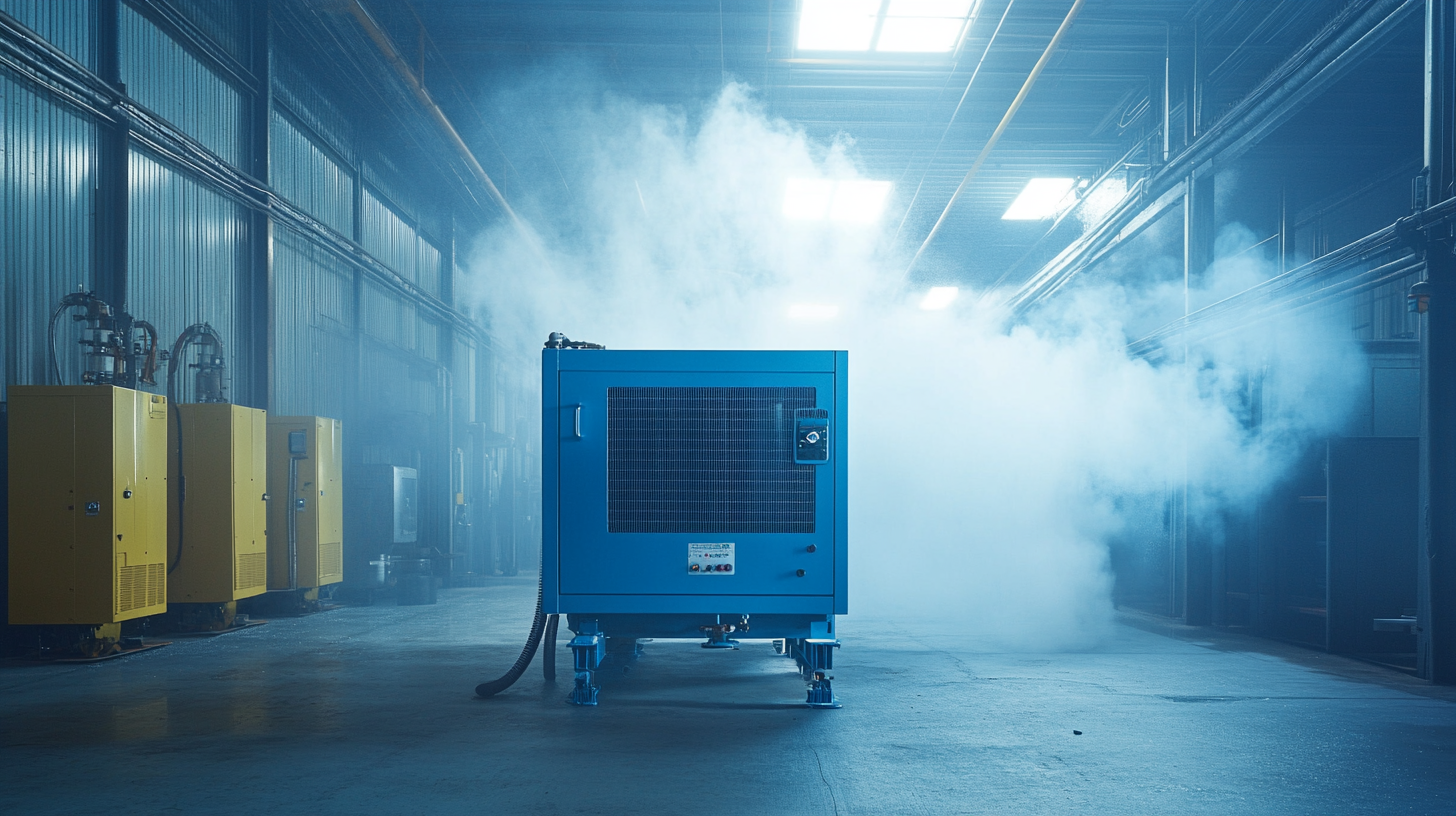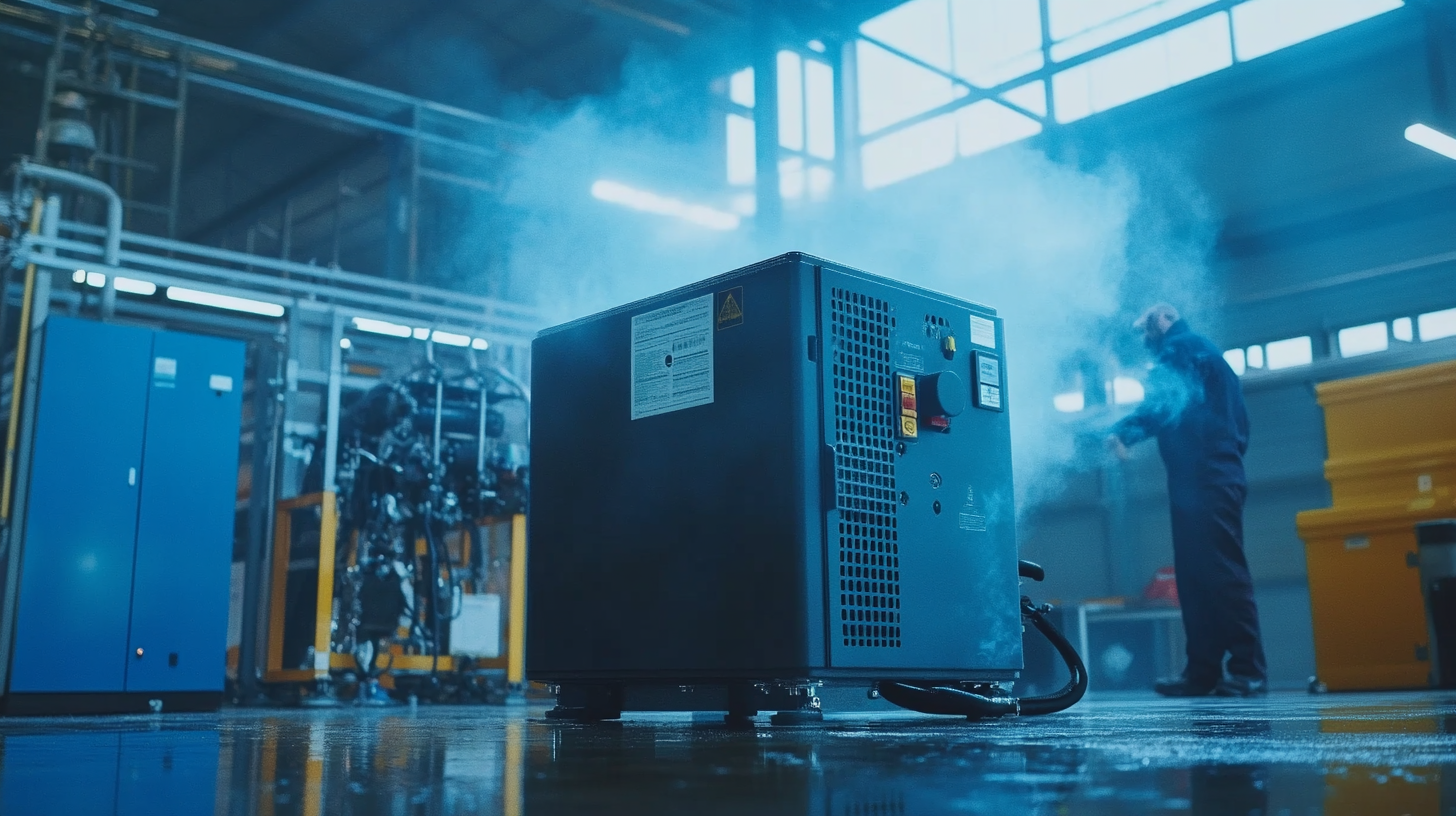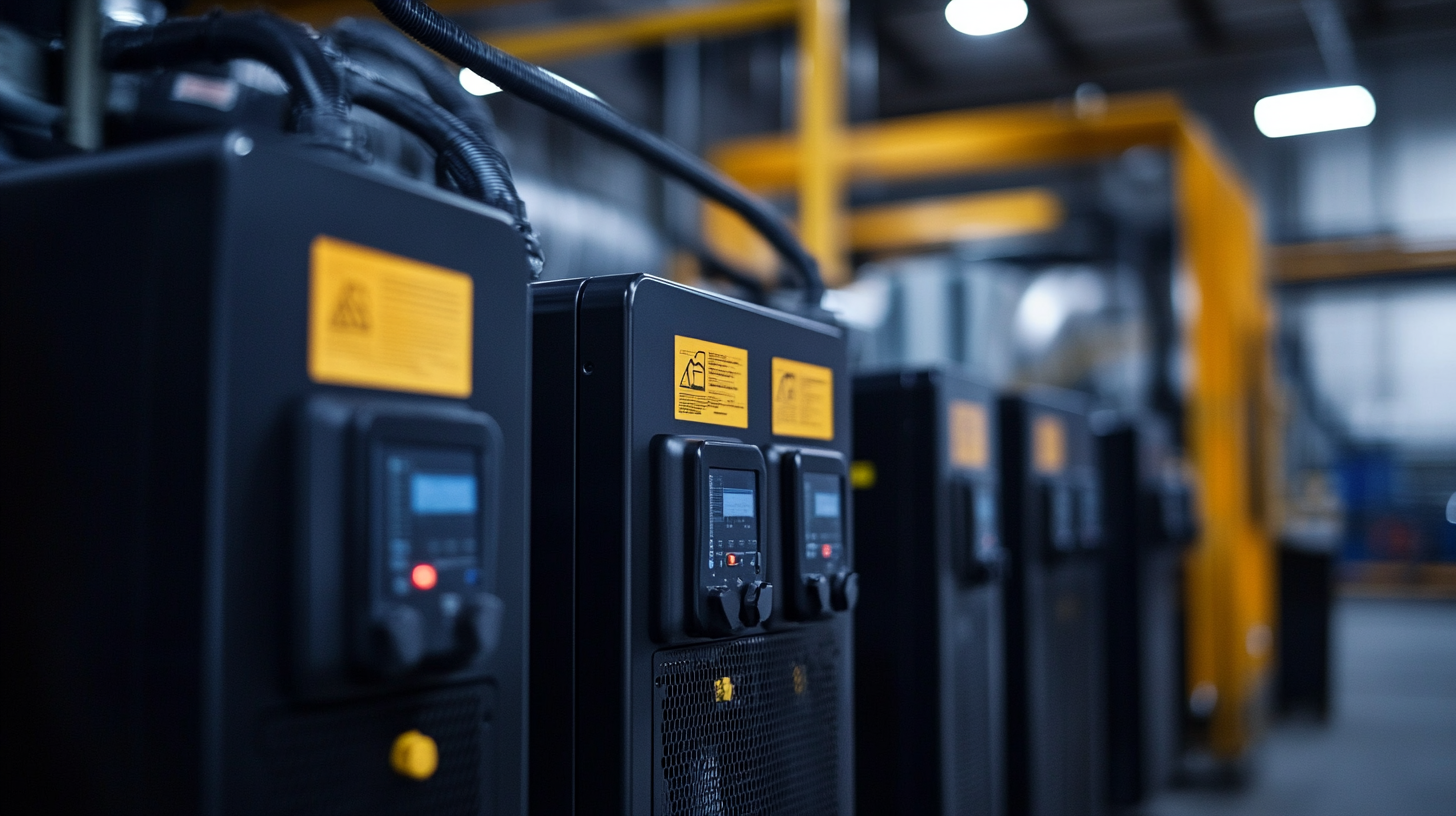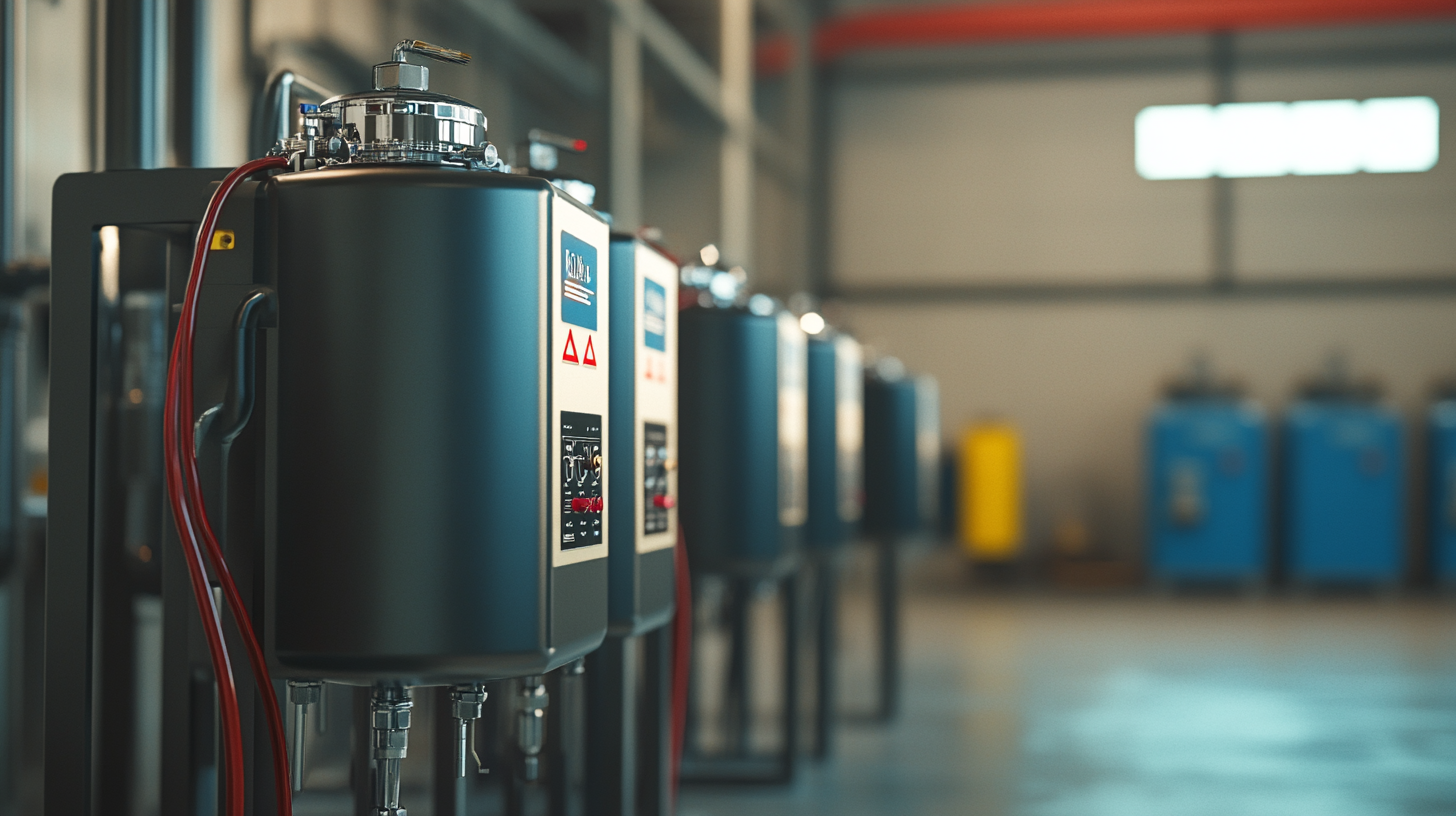
- sales@bjbod.com
- Mon - Sat at 7:00AM to 9:00PM

In the fast-paced world of industrial operations, maintaining cleanliness and efficiency is paramount for ensuring optimal performance and safety. According to a report by the International Society of Automation, contaminants present in the air can lead to equipment failures and reduced operational efficiency, costing industries millions each year. The introduction of innovative solutions such as the Compressed Air Cleaner has transformed how industries approach air quality management, offering powerful systems designed to remove particulate matter, oils, and water from compressed air systems, ultimately enhancing overall productivity.
The use of Compressed Air Cleaners has become increasingly critical as industries strive for compliance with stringent regulations and standards. The Compressed Air and Gas Institute (CAGI) emphasizes that the quality of compressed air is vital for machinery's reliability and longevity. Studies indicate that over 70% of operational issues in pneumatic systems can be traced back to inadequate air quality. By leveraging advanced Compressed Air Cleaner technologies, companies not only improve the hygiene of their operational environments but also reduce maintenance costs, extend the lifespan of their equipment, and ensure a safer workplace. As the demand for higher efficiency and sustainability continues to grow, investing in Compressed Air Cleaners presents a strategic advantage for industrial facilities aiming to enhance their performance.

Compressed air cleaners are revolutionizing industrial settings, offering numerous benefits that enhance both operational efficiency and workplace safety. In environments where dust, debris, and contaminants are prevalent, these cleaners effectively maintain air quality while protecting sensitive equipment. The combination of high-pressure air and filtration systems ensures that machinery operates optimally, significantly reducing the risk of breakdowns caused by particulate accumulation. One of the primary advantages of using compressed air cleaners is their ability to increase productivity. By maintaining a clean working environment, companies can minimize downtime related to equipment maintenance and repairs. Workers are less likely to encounter health issues associated with poor air quality, which can lead to absenteeism and decreased morale. Moreover, a cleaner environment supports compliance with health and safety regulations, helping businesses avoid potential fines and closures. Additionally, compressed air cleaners are cost-effective. Implementing these cleaners can lead to reduced energy consumption and lower operational costs over time. With the ability to target and remove airborne particles more efficiently than traditional cleaning methods, facilities can achieve superior cleanliness while using fewer resources. As industries continue to seek sustainable practices, the adoption of compressed air cleaners represents a smart investment for both environmental and economic reasons.

When selecting compressed air cleaners for industrial applications, it is crucial to consider several key features that can significantly enhance efficiency and productivity. One of the most important aspects is the filtration capability. According to a report by the Compressed Air and Gas Institute (CAGI), high-quality filtration systems can remove particles as small as 0.01 microns, which is essential in industries like pharmaceuticals and electronics where even the smallest contaminants can compromise product quality.
Another vital feature is the energy efficiency of the cleaning technology. A study by the U.S. Department of Energy highlights that optimizing compressed air systems can lead to energy savings of 20-30%. By choosing cleaners that are designed for low energy consumption while maintaining high performance, businesses can not only reduce operational costs but also lower their carbon footprint.
Moreover, the durability and maintenance requirements of compressed air cleaners cannot be overlooked. Industrial environments are often harsh, and equipment needs to withstand significant wear and tear. Advanced models featuring robust construction and self-cleaning mechanisms can ensure longevity and reduce downtime. According to a recent report from the International Energy Agency (IEA), systems that require less frequent maintenance can lead to substantial cost savings over time, making them a preferred choice for many manufacturers.
Lastly, adaptability to various applications is crucial. Modern compressed air cleaning technologies should be versatile enough to cater to different industrial needs, ensuring that they can be used across multiple processes. Research indicates that multi-functional systems, which can handle dry and wet cleaning without the need for additional equipment, are increasingly in demand, reflecting the evolving landscape of industrial requirements.

Compressed air cleaners have become an essential component in many industrial settings, particularly when balancing cost-effectiveness with environmental and health concerns. One of the most significant advantages of using compressed air for cleaning is its ability to reduce long-term costs associated with traditional cleaning agents. According to a report from the Energy Efficiency in Compressed Air Systems, companies can save up to 30% on their cleaning budgets by switching from chemical-based products to compressed air cleaners. This is largely due to reduced material costs, as well as decreased health and safety expenditures related to handling and storing hazardous cleaning chemicals.
Moreover, the impact of cleaning products on indoor air quality has been widely studied, revealing detrimental effects from the chemicals typically used in surface cleaning and disinfecting processes. A recent study highlighted that volatile organic compounds (VOCs) released during the use of these products can lead to poor indoor air quality, which poses risks to employee health and productivity. By implementing compressed air cleaners, industrial facilities not only embrace a more sustainable approach but also mitigate the risks associated with chemical exposure.
Beyond health considerations, businesses are increasingly aware of the regulatory pressures surrounding environmental responsibility. Utilizing compressed air cleaners not only cuts costs but also aligns with sustainability goals. With industrial companies striving for greener operations, the shift to compressed air systems signifies a commitment to reducing harmful emissions and fostering a healthier workplace, ultimately enhancing reputation and competitiveness in the market.

In modern industrial applications, the choice of cleaning methods can significantly affect operational efficiency and product integrity. Traditional cleaning methods often involve manual labor or chemical agents, which can be time-consuming and potentially harmful to both the environment and workers. In contrast, the use of compressed air cleaners presents an innovative alternative that not only enhances cleaning efficiency but also promotes a cleaner working environment.
Compressed air cleaners leverage high-velocity air streams to effectively remove contaminants without the need for chemicals or extensive manual intervention. This method is particularly advantageous in delicate applications, such as maintaining heritage objects or artworks, where traditional cleaning may pose risks of damage. Recent evaluations within the Munch Aula Paintings Project highlight how compressed air can gently and effectively remove embedded surface soiling from unvarnished oil paint, demonstrating the capability of compressed air methods to manage various substrates safely.
Moreover, advancements in technology, such as the integration of new materials and efficiencies in drying systems, align with the benefits of compressed air cleaners. These systems are not only effective in cleaning but also contribute to energy efficiency and reduced emissions, addressing the growing concern for sustainable industrial practices. As industries continue to seek innovative solutions, the comparative advantages of compressed air cleaners over conventional methods become increasingly evident. They offer a robust, safe, and environmentally friendly option for maintaining cleanliness in various industrial applications.
In various industrial applications, compressed air cleaners have proven to be indispensable tools for enhancing productivity and maintaining operational efficiency. One striking example comes from the automotive industry, where a major manufacturer implemented a compressed air cleaning system to address issues with dust and debris accumulation on production lines. By integrating high-efficiency air cleaners, the company was able to significantly reduce downtime caused by equipment malfunctions. As a result, not only was the overall cleanliness of the workspace improved, but the company's output also experienced a remarkable increase, showcasing the transformative effect of compressed air technology.
Another compelling case study emerged from the food processing sector, where hygiene is of utmost importance. A leading food manufacturer faced challenges with contaminants in their packaging area, which could compromise product safety. By deploying compressed air cleaners that met stringent industry standards, they successfully minimized the risk of contamination. The cleaner air contributed to a safer environment and helped maintain compliance with food safety regulations. The implementation of this technology not only safeguarded the products but also reinforced consumer trust, illustrating how effective air cleaning solutions can drive successful outcomes in high-stakes industries.
These real-life success stories underline the versatility and critical role of compressed air cleaners across various industrial sectors. Whether it's improving product quality or optimizing workplace safety, the power of compressed air cleaning is evident, promoting a cleaner and more efficient work environment.